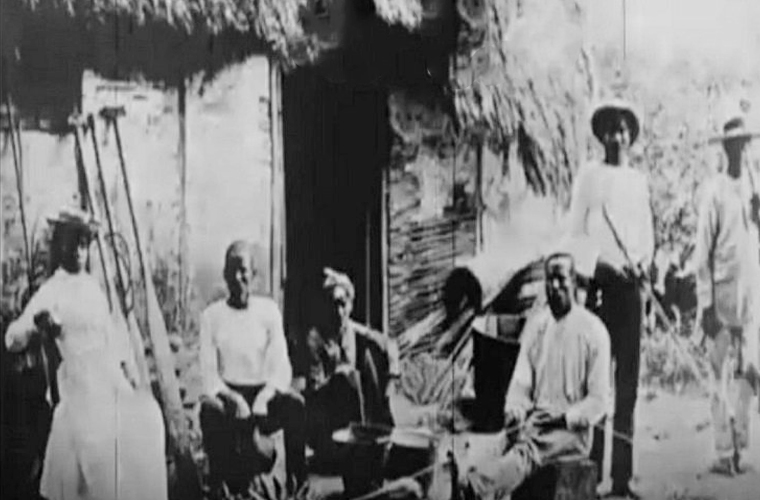When slavery is discussed in the media and is taught in schools, very little is mentioned of the strong and fierce resistance which Africans put up against the slavers and their accomplices. The bravery of African ancestors is often swept under the rug so that the new and coming generations would have a picture of weak and defeated ancestors.
But here at Liberty Writers Africa, we think and act differently. We understand the psychological impact of not teaching the people about the bravery of their ancestors, and so we do our best to tell of the revolts and victories of African ancestors. That way, those in this generation will draw strength from their boldness in the face of draconian encounters with the West.
The revolts by African slaves in the Americas, the West Indies, and Europe, started to increase around the 1700s. The revolt by Breffu and her people happened in 1733. It was a mighty revolt against the Danes who at that time were the European power who owned the West Indies. Although before the Danes ruled and controlled the West Indies, it was first governed and controlled by the Spanish, the British, the French, and the Dutch, all from 1600 to 1718.
It was in 1718 that the Danes had total control of the West Indies and established their government and colony. And after 15 years of their control, the Africans struck, in a rebellion that is recorded in history to be the longest-lasting revolt by African slaves in the Americas.
In November of 1733, Breffu led other enslaved Africans from the Akan ethnic group of the Akwamu Kingdom of Ghana, to attack the Danish army stationed in the West Indies. She was enslaved and owned by Pieter Krøyer in Coral Bay.
She planned the rebellion with another slave called Christian. Both of them who were royalty from Ghana was able to plot the revolt and then gather over 150 of their enslaved kin to join them in taking over the West Indies.
After they had all rehearsed and concluded their plans, they struck on the 23rd of November, 1733. That day, they first went about their normal chores. But their masters and overseers did not realize that they had hidden knives in the woods that they usually delivered to the fort at Coral Bay.
After they had successfully entered Fort Fredericksvaern without any suspicions, the slaves killed a great number of the soldiers in the fort. The fight was brutal, as the slaves killed all soldiers on the ground, except for one, John Gabriel, who managed to escape. After he escaped, he ran off to alert the Danish officials, but it was too late. The slaves took over the fort and fired the cannon in the fort to signal their takeover to the others who were waiting.
Breffu and the others were waiting for the signal in the plantations. Once they heard the cannon fired, they began the second phase of their attack. Breffu, accompanied by Christian charged into the home of her master, Pieter Krøyer, and killed him and his wife. While they were at it, the other slaves stormed the weapons houses and seized weapons, guns and gun powder.
Breffu and her army of rebels also killed three members of the Van Stell family, who were one of the wealthiest families on the Island. Wealth made from the blood, tears, and sweat of the African slaves.
A handful of the slave masters and their overseers were able to escape from the island on their boats, while Breffu and the Akwamu people took charge and control of a greater part of the Island. Breffu and the Akwamu continued to control the Island till 1734 when the French military invaded the island to seize reclaim it for the Danes.
In April of 1734, while the French invasion and battles were going on, Breffu and 23 other leaders of the Akwamu rebels performed a suicide ritual and killed themselves. They had seen that the war could not be won. They took the brave path of ritual-suicide so that they would not be captured and humiliated by the French. The other rebels found their bodies at Browns bay a few minutes after the ritual.
But despite the death of Breffu and the 23 others, the rebels continued fighting and resisting the French for another month. By May of that same year, the Akwamu rebels were defeated by the French army, because the French had better weapons and ammunition. The remaining of the Akwamu rebels were executed in August of that same year, and that marked the end of the slave rebellion of St John.
Breffu’s courage and leadership were unmatched. And more so, it was a shock to the French army and the Danish officials to finally learn that it was a woman who led the rebellion. But how would they have ever suspected that the African woman is as strong and determined as the African man, if not stronger in some cases?
Breffu’s rebellion and achievements in the field of African freedom is a clear testament to the undying love for the freedom of the Black man. Stories such as these help us to each this generation of Africans that they can do more towards freeing themselves of Neo-colonial rule, and oppression. Her story is one that we are most proud of.

